The Ultimate Guide to Resume 2023: 10 Ultimate Strategies to Boost Your Ranking

Introduction
Do you want to write a resume that gets you noticed by recruiters and employers and get selected for the interviews in 2023? Do you want to know the secrets of resume writing that can boost your ranking and land you your dream job? If yes, then you are in the right place.
Resume writing is one of the most important skills that you need to master if you want to succeed in your career. A resume is not just a document that lists your education, skills, and experience. It is a marketing tool that showcases your value proposition and convinces the hiring manager that you are the best candidate for the job.
However, resume writing is not easy. It is a challenging and complex task that requires a lot of research, planning, writing, editing, and testing. You have to follow the latest trends and best practices of resume writing, optimize your resume for applicant tracking systems (ATS), and tailor your resume for different jobs and industries.
I know how hard it is because I have been there. I used to struggle with resume writing a lot. I had no idea how to write a resume that could get me interviews and offers. I used to spend hours on Google searching for resume tips and templates, but nothing seemed to work. I was frustrated and hopeless.
But then, my research paid off. I discovered the ultimate strategies to write a resume that stands out. These strategies helped me transform my resume from boring and generic to powerful and unique. They helped me increase my response rate, interview rate, and offer rate significantly. They helped me achieve my career goals and dreams.
And now, I want to share these strategies with you. In this blog post, I will reveal the 10 ultimate strategies to write a resume that stands out in 2023. These strategies are based on my personal experience, research, and feedback from recruiters and employers. They are proven to work for any industry, role, and experience level. They are easy to follow and implement.
By the end of this blog post, you will learn how to:
- Use a modern and professional resume template
- Optimize your resume for applicant tracking systems (ATS)
- Write a powerful resume summary or objective
- Showcase your skills and achievements with bullet points
- Highlight your education and certifications
- Include relevant keywords throughout your resume
- Add some personality to your resume with hobbies and interests
- Include a cover letter and a portfolio with your resume
- Proofread and edit your resume before sending it
- Test and measure the effectiveness of your resume
Are you ready to learn the ultimate strategies to write a resume that stands out in 2023? Let’s get started!
Strategy 1: Use a modern and professional resume template

What is a resume template? A resume template is a pre-designed layout that helps you organize the information on your resume. It provides you with the structure, format, font, color, and style of your resume. It saves you time and effort by allowing you to focus on the content rather than the design of your resume.
Why is it important to use a modern and professional resume template? Because it can make a huge difference in how your resume looks and feels. A modern and professional resume template can:
- Make your more attractive and appealing
- Make your more readable and scannable
- Make your more consistent and coherent
- Make your more relevant and updated
A modern and professional resume template can help you create a positive first impression on recruiters and employers. It can help you stand out from the crowd of other applicants who use outdated or unprofessional templates. It can help you showcase your personal brand and value proposition more effectively.
How do you choose a modern and professional resume template? There are many factors that you need to consider when choosing a modern and professional resume template, such as:
- Your industry: Different industries have different expectations and preferences. For example, if you are applying for a creative or artistic job, you may want to use a more colorful or expressive template than if you are applying for a corporate or formal job.
- Your role: Different roles have different requirements and objectives. For example, if you are applying for a managerial or leadership role, you may want to use a more structured or authoritative template than if you are applying for an entry-level or support role.
- Your experience level: Different experience levels have different strengths and weaknesses. For example, if you are a fresh graduate or a career changer, you may want to use a more functional or skills-based template than if you are an experienced or senior professional.
- Your personal preference: Ultimately, you want to choose a resume template that suits your personal preference and style. You want to choose a resume template that reflects your personality and identity. You want to choose a resume template that makes you feel confident and comfortable.
Where do you find modern and professional resume templates? There are many sources that you can use to find modern and professional resume templates, such as:
- Online resume builders: Online resume builders are websites or apps that allow you to create and customize your resume online. They offer a variety of modern and professional resume templates that you can choose from and edit according to your needs. Some examples of online resume builders are [Resume.io], [Zety], and [Novorésumé].
- Resume templates websites: Resume templates websites are websites that provide you with free or paid resume templates that you can download and use offline. They offer a wide range of modern and professional resume templates that you can browse and select according to your preferences. Some examples of resume template websites are [Hloom], [Freepik], and [Canva].
- Resumes examples websites: Resumes examples websites are websites that provide you with real-life examples from different industries, roles, and experience levels. They offer a great source of inspiration and guidance for creating your own resume. You can learn from the best practices and avoid the common mistakes of other resumes. Some examples of resume examples websites are [Resume Genius], [The Balance Careers], and [Indeed].
How do you customize your resume template? Once you have chosen a modern and professional resume template, you need to customize it to match your personal brand and the job requirements. You need to make sure that your resume template is:
- Aligned with your industry, role, and experience level
- Tailored to your skills, achievements, and value proposition
- Optimized for applicant tracking systems (ATS)
- Formatted properly and consistently
- Error-free and accurate
To customize your resume template, you need to:
- Replace the placeholder text with your own information
- Add or remove sections as needed
- Adjust the font size, type, color, and style as desired
- Change the layout, spacing, margins, and alignment as appropriate
- Proofread and edit your resume for grammar, spelling, punctuation, and consistency
Strategy 2: Optimize your resume for applicant tracking systems (ATS)
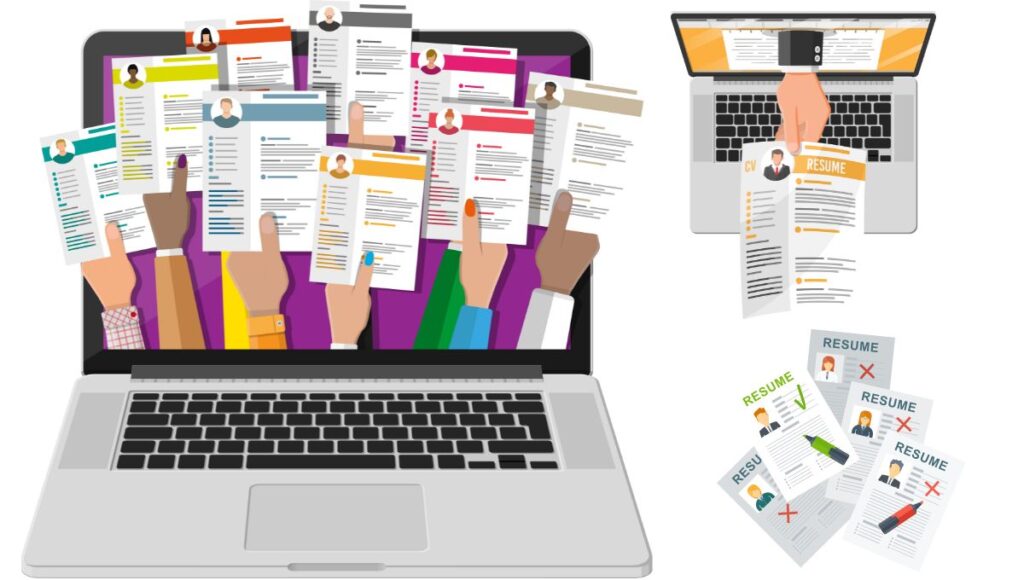
What is an applicant tracking system (ATS)? An applicant tracking system (ATS) is software that helps recruiters and employers manage the hiring process. It automates the tasks of screening, sorting, ranking, and storing resumes. It filters out the resumes that do not meet the minimum qualifications or criteria for the job. It saves time and resources by reducing the number of resumes that need to be reviewed manually.
Why is it important to optimize your resume for ATS? Because it can make a huge difference in whether your resume gets seen by human eyes or not. According to some studies, more than 90% of large companies use ATS to screen resumes. And more than 75% of resumes are rejected by ATS before they reach the hiring manager.
If you want to increase your chances of getting past the ATS and landing an interview, you need to optimize your resume for ATS. You need to make sure that your resume is:
- Relevant: Your resumes should match the job description as closely as possible. You should use the same keywords, phrases, and terminology that are used in the job posting. You should highlight your skills, achievements, and qualifications that are relevant to the job.
- Readable: Your resumes should be easy to read and scan by both humans and bots. You should use a simple and clear font, such as Arial or Calibri. You should avoid using graphics, tables, columns, or other fancy elements that may confuse the ATS. You should use standard headings, such as Summary, Experience, Education, etc.
- Structured: Your resumes should follow a logical and consistent structure that helps the ATS parse your information correctly. You should use reverse chronological order for your work history and education sections. You should use bullet points for your skills and achievements sections. You should use dates, locations, titles, and company names for your work experience section.
How do you optimize your resume for ATS? There are many steps that you can take to optimize your resumes for ATS, such as:
- Research the keywords for the job: Keywords are the words or phrases that describe the skills, qualifications, responsibilities, or achievements that are required or desired for the job. They are usually found in the job description, but they can also research the keywords for the company: Keywords are not only related to the job but also to the company. You should research the company’s mission, vision, values, culture, and goals. You should use keywords that show your alignment and fit with the company’s identity and expectations.
- Use the keywords strategically throughout your resumes: Keywords are not only important for the ATS, but also for the human reader. You should use keywords strategically throughout your resume to highlight your relevance and value. You should use keywords in your resume summary or objective, skills, achievements, and cover letter sections. You should use synonyms, variations, and modifiers of keywords to avoid keyword stuffing and show your diversity of skills.
- Use a standard file format for your resumes: File format is another factor that can affect how your resume is processed by the ATS. You should use a standard file format for your resume, such as PDF or DOCX. You should avoid using other file formats, such as JPG or PNG, that may not be compatible with the ATS. You should also name your file appropriately, such as FirstName_LastName_Resume.pdf or FirstName_LastName_Resume.docx.
- Test your resume for ATS compatibility: Testing is the final step to optimize your resume for ATS. You should test your resume for ATS compatibility before sending it to any job application. You can use online tools or websites that can help you check your resume for ATS compatibility, such as [Jobscan], [Resume Worded], or [TopResume]. These tools can give you feedback and suggestions on how to improve your resume for ATS.
Strategy 3: Write a powerful resume summary or objective
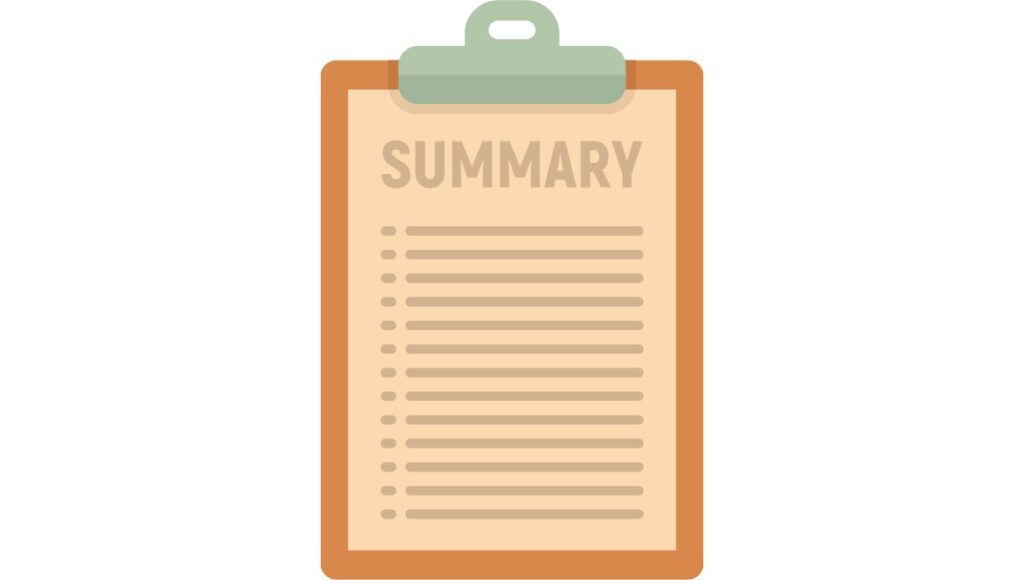
What is a resume summary or objective? A resume summary or objective is a short statement that summarizes your main skills, achievements, and goals on your resume. It is usually placed at the top of your resume, below your contact information. It is one of the first things that recruiters and employers see on your resume.
Why is it important to write a powerful resume summary or objective? Because it can make a huge difference in how your resume is perceived by recruiters and employers. A powerful resume summary or objective can:
- Grab the attention of recruiters and employers
- Showcase your value proposition and unique selling point
- Highlight your most relevant and impressive skills and achievements
- Express your motivation and interest in the job
- Encourage recruiters and employers to read the rest of your resume
A powerful resume summary or objective can help you create a positive first impression on recruiters and employers. It can help you stand out from the crowd of other applicants who have generic or boring summaries or objectives. It can help you convince recruiters and employers that you are the best candidate for the job.
How do you choose between a resume summary or objective? There are two main types of resume summaries or objectives: a resume summary and a resume objective. A resume summary is a brief overview of your professional background, skills, and achievements. A resume objective is a short statement of your career goals and aspirations. The main difference between a resume summary and a resume objective is the focus: a resume summary focuses on what you have done, while a resume objective focuses on what you want to do.
The type of resume summary or objective that you choose depends on your situation and purpose. Generally speaking, you should use a resume summary if:
- You have relevant work experience in the same or similar field as the job
- You have specific skills and achievements that match the job requirements
- You want to highlight your expertise and value as a professional
You should use a resume objective if:
- You have little or no work experience in the same or similar field as the job
- You have transferable skills and potential that can be applied to the job
- You want to show your enthusiasm and interest in the job
How do you write a powerful resume summary or objective? There are many tips and tricks that you can use to write a powerful resume summary or objective, such as:
- Use the first-person singular pronoun “I” to show confidence and personality
- Use action verbs to show what you have done or what you can do
- Use quantifiable results to show how you have added value or how you can add value
- Use keywords that match the job description and the company’s culture
- Use positive and negative sentiments to show emotion and passion
- Use power words to show impact and influence
- Use emojis to add some flair and fun
To write a powerful resume summary or objective, you need to:
- Identify your main skills, achievements, and goals that are relevant to the job
- Write one sentence that summarizes your main skills, achievements, and goals using the tips above
- Review and edit your sentence for clarity, accuracy, and effectiveness
Here are some examples of powerful resume summaries or objectives:
- Resume summary: I am an experienced and creative graphic designer with over 5 years of experience in creating stunning logos, flyers, posters, and websites for various clients. I have excellent skills in Adobe Photoshop, Illustrator, and InDesign, as well as a keen eye for design and aesthetics. I have won several awards and recognition for my work, such as the Best Graphic Designer of the Year 2022. I am passionate about delivering high-quality and innovative solutions that meet the needs and expectations of my clients.
- Resume objective: I am a fresh graduate with a Bachelor’s degree in Computer Science and a strong interest in web development. I have learned the fundamentals of HTML, CSS, JavaScript, and PHP through various online courses and projects. I have also developed a portfolio of websites that showcase my skills and creativity. I am eager to join a reputable and dynamic company that can offer me the opportunity to learn from the best and grow as a professional web developer.
Strategy 4: Showcase your skills and achievements with bullet points
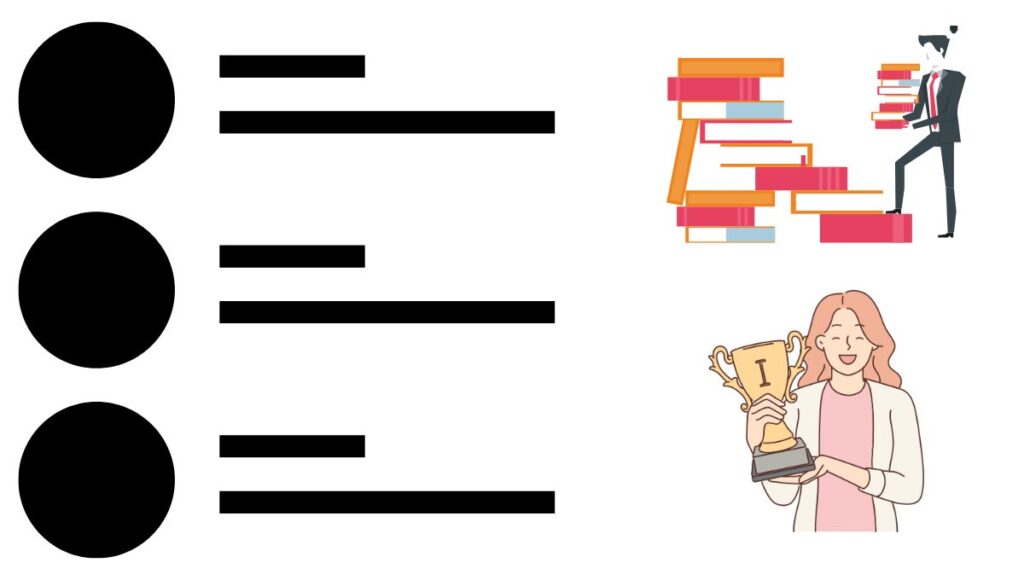
What are bullet points? Bullet points are short and concise statements that highlight your skills and achievements on your resume. They are usually placed under each section of your resume, such as Experience, Education, Skills, etc. They are one of the most effective ways to showcase your value and potential on your resume.
Why is it important to showcase your skills and achievements with bullet points? Because it can make a huge difference in how your resume is evaluated by recruiters and employers. Showcasing your skills and achievements with bullet points can:
- Make your resume more readable and scannable
- Make your resume more specific and relevant
- Make your resume more impactful and persuasive
- Make your resume more memorable and impressive
Showcasing your skills and achievements with bullet points can help you demonstrate your qualifications and suitability for the job. It can help you highlight your strengths and accomplishments that set you apart from other applicants. It can help you persuade recruiters and employers that you are the best candidate for the job.
How do you write bullet points for your skills and achievements? There are many guidelines and best practices that you can follow to write bullet points for your skills and achievements, such as:
- Use action verbs to show what you have done or what you can do
- Use quantifiable results to show how you have added value or how you can add value
- Use keywords that match the job description and the company’s culture
- Use positive and negative sentiments to show emotion and passion
- Use power words to show impact and influence
- Use emojis to add some flair and fun
To write bullet points for your skills and achievements, you need to:
- Identify your main skills and achievements that are relevant to the job
- Write one bullet point for each skill or achievement using the guidelines above
- Review and edit your bullet points for clarity, accuracy, and effectiveness
Here are some examples of bullet points for skills and achievements:
- Experience:
- Designed, developed, and launched a responsive e-commerce website for a local clothing store using WordPress, WooCommerce, HTML, CSS, and JavaScript
- Increased the website traffic by 300% and the sales conversion rate by 50% within 6 months through SEO optimization, social media marketing, and email campaigns
- Managed a team of 5 web developers and coordinated with the client on project requirements, deadlines, feedback, and revisions
- Education:
- Graduated with honors from ABC University with a Bachelor’s degree in Computer Science
- Completed several online courses on web development, such as [Web Development Bootcamp], [Front-End Web Development], and [Back-End Web Development]
- Participated in various web development competitions and hackathons, such as [CodeFest], [Hackathon], and [WebDev Challenge]
- Skills:
- Proficient in HTML, CSS, JavaScript, PHP, WordPress, WooCommerce, Shopify, Bootstrap, jQuery, Ajax, MySQL, MongoDB, Firebase
- Familiar with React, Angular, Vue, Node.js, Express.js, Laravel, Ruby on Rails
- Skilled in Adobe Photoshop, Illustrator, InDesign
Strategy 5: Highlight your education and certifications
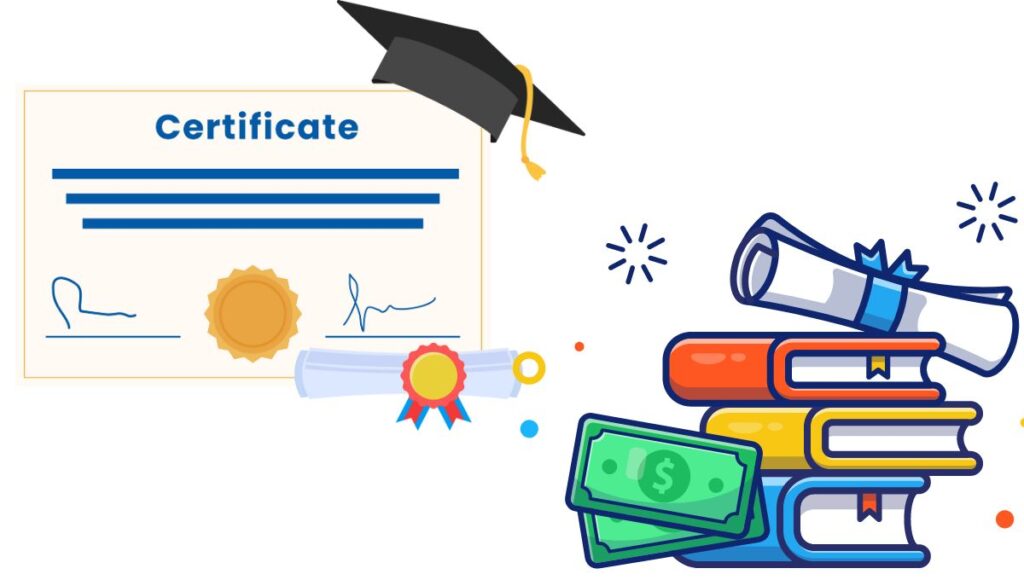
What are education and certifications? Education and certifications are the formal and informal learning experiences that you have acquired in your academic and professional journey. They are the evidence of your knowledge, skills, and qualifications in various fields and domains. They are usually listed on your resume under separate sections, such as Education, Certifications, Courses, etc.
Why is it important to highlight your education and certifications? Because it can make a huge difference in how your resume is valued by recruiters and employers. Highlighting your education and certifications can:
- Show your level of education and expertise in your field
- Show your commitment and dedication to continuous learning and improvement
- Show your relevance and currency in the changing market and industry
- Show your credibility and authority in your domain
- Show your compatibility and fit with the company’s culture and values
Highlighting your education and certifications can help you demonstrate your qualifications and suitability for the job. It can help you showcase your strengths and accomplishments that set you apart from other applicants. It can help you persuade recruiters and employers that you are the best candidate for the job.
How do you highlight your education and certifications? There are many tips and best practices that you can follow to highlight your education and certifications, such as:
- List your education and certifications in reverse chronological order
- Include relevant details, such as degree, major, institution, location, date, GPA, honors, awards, etc.
- Add links or attachments to your certificates, diplomas, transcripts, or portfolios
- Use keywords that match the job description and the company’s culture
- Use positive and negative sentiments to show emotion and passion
- Use power words to show impact and influence
- Use emojis to add some flair and fun
To highlight your education and certifications, you need to:
- Identify your main education and certifications that are relevant to the job
- Write one line for each education or certification using the tips above
- Review and edit your lines for clarity, accuracy, and effectiveness
Here are some examples of how to highlight your education and certifications:
- Education:
- Master of Business Administration (MBA) with a concentration in Marketing from XYZ University, New York, NY (2021)
- Graduated with a 3.9 GPA and received the Dean’s List Award for academic excellence
- Completed a capstone project on developing a digital marketing strategy for a local startup
- Certifications:
- Google Ads Certification from Google (2022)
- Demonstrated proficiency in creating, managing, and optimizing online advertising campaigns for various clients
- Passed the exam with a score of 95% and received a badge of recognition from Google
Strategy 6: Include relevant keywords throughout your resume

What are keywords? Keywords are the words or phrases that describe the skills, qualifications, responsibilities, or achievements that are required or desired for the job. They are usually found in the job description, but they can also be found in the company’s website, social media, or other sources. They are the terms that recruiters and employers use to search for and evaluate resumes.
Why is it important to include relevant keywords throughout your resumes? Because it can make a huge difference in how your resume is ranked and rated by both humans and bots. Including relevant keywords throughout your resume can:
- Increase your chances of getting past the applicant tracking systems (ATS) and landing an interview
- Increase your relevance and compatibility with the job requirements and expectations
- Increase your visibility and exposure to recruiters and employers
- Increase your credibility and authority in your field
- Increase your impact and influence on the hiring decision
Including relevant keywords throughout your resume can help you demonstrate your qualifications and suitability for the job. It can help you showcase your strengths and accomplishments that match the job criteria. It can help you persuade recruiters and employers that you are the best candidate for the job.
How do you find relevant keywords for your resumes? There are many methods and tools that you can use to find relevant keywords for your resume, such as:
- Analyze the job description: The job description is the primary source of keywords for your resume. You should read the job description carefully and identify the keywords that are related to the skills, qualifications, responsibilities, or achievements that are required or desired for the job. You should also pay attention to the frequency, order, and emphasis of the keywords in the job description.
- Research the company: The company is another source of keywords for your resume. You should research the company’s mission, vision, values, culture, and goals. You should use keywords that show your alignment and fit with the company’s identity and expectations. You should also look for keywords that are specific to the company’s industry, niche, or products.
- Use keyword tools: Keyword tools are websites or apps that can help you generate, analyze, or optimize keywords for your resume. They can help you find synonyms, variations, or modifiers of keywords that can increase your diversity of skills. They can also help you check the relevance, popularity, or competition of keywords that can affect your ranking. Some examples of keyword tools are [Google Keyword Planner], [Moz Keyword Explorer], and [SEMrush].
How do you include relevant keywords throughout your resumes? There are many tips and best practices that you can follow to include relevant keywords throughout your resume, such as:
- Use keywords strategically throughout your resumes: Keywords are not only important for the ATS, but also for the human reader. You should use keywords strategically throughout your resume to highlight your relevance and value. You should use keywords in your resume summary or objective, skills, achievements, and cover letter sections. You should use synonyms, variations, and modifiers of keywords to avoid keyword stuffing and show your diversity of skills.
- Use natural language and context for your keywords: Keywords are not just words or phrases that you insert randomly into your resume. They should make sense and flow naturally with your content. You should use natural language and context for your keywords to show your understanding and application of them. You should use sentences, examples, or stories to illustrate how you have used or acquired the keywords in your resume.
- Optimize your keywords for both humans and bots: Keywords are not only used by humans to evaluate resumes, but also by bots to rank resumes. You should optimize your keywords for both humans and bots to increase your chances of getting noticed and hired. You should use natural language, highlighting, and spacing for humans to read and scan your resume easily. You should use standard headings, formatting, and file format for bots to parse and process your resume correctly.
Strategy 7: Add some personality to your resume with hobbies and interests

What are hobbies and interests? Hobbies and interests are the activities that you enjoy doing in your spare time or outside of work. They are the things that make you happy, relaxed, or fulfilled. They are usually listed on your resume under a separate section, such as Hobbies, Interests, Extracurriculars, etc.
Why is it important to add some personality to your resume with hobbies and interests? Because it can make a huge difference in how your resume is received by recruiters and employers. Adding some personality to your resume with hobbies and interests can:
- Show a glimpse of who you are as a person beyond your professional persona
- Show a balance between work and life
- Show a passion for learning new things
- Show creativity for expressing yourself
- Show a fit for the company culture
Adding some personality to your resume with hobbies and interests can help you create a connection with recruiters and employers. It can help you stand out from the crowd of other applicants who have bland or generic resumes. It can help you impress recruiters and employers with your uniqueness and diversity.
How do you choose hobbies and interests for your resume? There are many factors that you need to consider when choosing hobbies and interests for your resume, such as:
- Relevance: Your hobbies and interests should be relevant to the job or the company that you are applying for. You should choose hobbies and interests that show your skills, knowledge, or values that are related to the job or the company. You should also avoid hobbies and interests that may be controversial, offensive, or inappropriate for the job or the company.
- Appropriateness: Your hobbies and interests should be appropriate for your resume. You should choose hobbies and interests that are professional, positive, and respectful. You should also avoid hobbies and interests that may be too personal, too trivial, or too common for your resume.
- Uniqueness: Your hobbies and interests should be unique for your resume. You should choose hobbies and interests that are different, interesting, or impressive. You should also avoid hobbies and interests that are too generic, too boring, or too cliché for your resume.
How do you add some personality to your resume with hobbies and interests? There are many tips and best practices that you can follow to add some personality to your resume with hobbies and interests, such as:
- List your hobbies and interests in bullet points
- Include relevant details, such as level of proficiency, duration of involvement, achievements, awards, etc.
- Use keywords that match the job description and the company’s culture
- Use positive and negative sentiments to show emotion and passion
- Use power words to show impact and influence
- Use emojis to add some flair and fun
To add some personality to your resume with hobbies and interests, you need to:
- Identify your main hobbies and interests that are relevant, appropriate, and unique for the job or the company
- Write one bullet point for each hobby or interest using the tips above
- Review and edit your bullet points for clarity, accuracy, and effectiveness
Here are some examples of how to add some personality to your resume with hobbies and interests:
- Hobbies:
- Playing guitar
- Self-taught guitar player with over 10 years of experience in various genres, such as rock, blues, jazz, and country
- Performed in several local bands and events as a lead guitarist and vocalist
- Created a YouTube channel with over 50K subscribers where I upload guitar covers and tutorials
- Interests:
- Traveling
- Visited over 30 countries across 5 continents in the past 5 years
- Learned about different cultures, languages, cuisines, and histories
- Documented my travel experiences on my blog and Instagram account
Strategy 8: Include a cover letter and a portfolio with your resume

What are a cover letter and a portfolio? A cover letter and a portfolio are additional documents that you can include with your resume to provide more information about yourself and your work. A cover letter is a one-page letter that introduces yourself, explains your motivation, and highlights your fit for the job. A portfolio is a collection of samples or examples of your work that showcase your skills, creativity, and achievements.
Why is it important to include a cover letter and a portfolio with your resume? Because it can make a huge difference in how your resume is considered by recruiters and employers. Including a cover letter and a portfolio with your resume can:
- Provide more details and context for your resume
- Showcase your work quality and diversity
- Express your personality and voice
- Demonstrate your communication and presentation skills
- Impress recruiters and employers with your professionalism and initiative
Including a cover letter and a portfolio with your resume can help you complement your resume and enhance your application. It can help you stand out from the crowd of other applicants who only send their resumes. It can help you persuade recruiters and employers that you are the best candidate for the job.
How do you write a cover letter and a portfolio? There are many tips and best practices that you can follow to write a cover letter and a portfolio, such as:
- Use the same design and style as your resume
- Use the same keywords and tone as the job description and the company’s culture
- Use positive and negative sentiments to show emotion and passion
- Use power words to show impact and influence
- Use emojis to add some flair and fun
To write a cover letter, you need to:
- Address the letter to the hiring manager or the recruiter by name
- Start with a catchy opening paragraph that grabs the attention of the reader
- Explain why you are interested in the job and the company
- Highlight your most relevant skills, achievements, and value proposition for the job
- End with a strong closing paragraph that reiterates your interest, enthusiasm, and fit for the job
- Sign off with a professional salutation and your name
To write a portfolio, you need to:
- Select the best samples or examples of your work that are relevant to the job and the company
- Organize your samples or examples in a logical order, such as by category, project, or date
- Provide brief descriptions or captions for each sample or example that explains what it is, what you did, how you did it, and what results you achieved
- Include links or attachments to your samples or examples if they are online or digital
How do you format, attach, and send your cover letter and portfolio with your resume? There are many tips and best practices that you can follow to format, attach, and send your cover letter and portfolio with your resume, such as:
- Format your cover letter and portfolio in PDF or DOCX file format
- Name your files appropriately, such as FirstName_LastName_CoverLetter.pdf or FirstName_LastName_Portfolio.docx
- Attach your files to your email or online application form
- Write a concise and clear email subject line that includes the job title and your name, such as Web Developer – FirstName LastName
- Write a brief and polite email message that introduces yourself, states the purpose of your email, summarizes your qualifications, expresses your interest, and thanks the recipient for their time
Strategy 9: Proofread and edit your resume before sending it
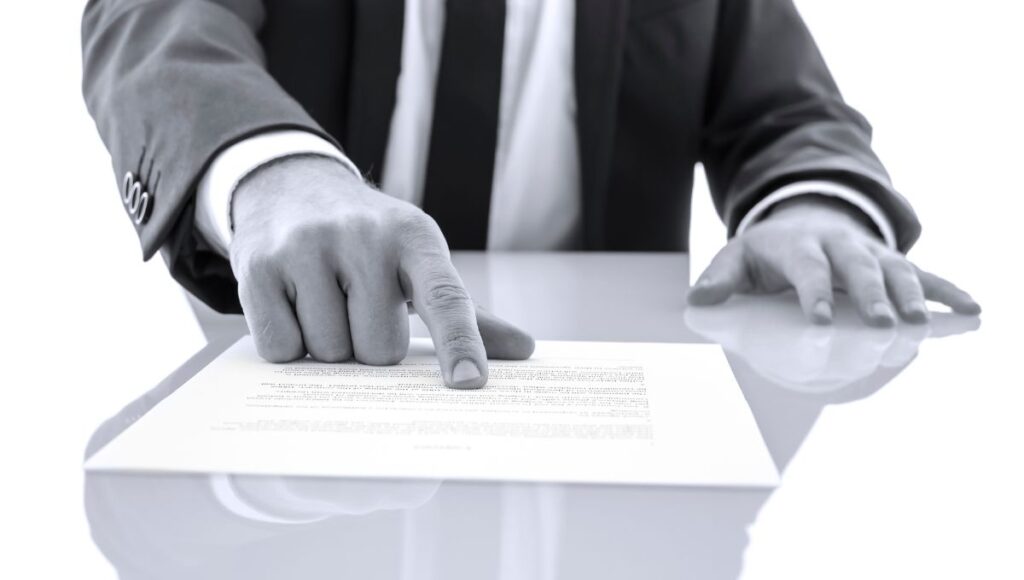
What is proofreading and editing? Proofreading and editing are the processes of checking and correcting your resume for errors and mistakes. Proofreading is the process of checking your resume for grammar, spelling, punctuation, and consistency. Editing is the process of checking your resume for clarity, accuracy, and effectiveness. They are the final steps to polish your resume and make it ready for submission.
Why is it important to proofread and edit your resume before sending it? Because it can make a huge difference in how your resume is judged by recruiters and employers. Proofreading and editing your resume before sending it can:
- Prevent embarrassing and costly errors and mistakes that can ruin your reputation and credibility
- Improve the readability and scannability of your resume
- Enhance the impact and persuasiveness of your resume
- Increase the confidence and trust of recruiters and employers in your abilities and professionalism
Proofreading and editing your resume before sending it can help you avoid rejection and disappointment. It can help you stand out from the crowd of other applicants who have sloppy or careless resumes. It can help you persuade recruiters and employers that you are the best candidate for the job.
How do you proofread and edit your resume before sending it? There are many tips and best practices that you can follow to proofread and edit your resume before sending it, such as:
- Read your resume aloud: Reading your resume aloud can help you catch errors and mistakes that you may miss when reading silently. It can help you check the flow, tone, and voice of your resume. It can also help you spot any awkward or unclear sentences or phrases.
- Use online tools or websites: Online tools or websites can help you check your resume for grammar, spelling, punctuation, and consistency. They can also help you check your resume for clarity, accuracy, and effectiveness. Some examples of online tools or websites that can help you proofread and edit your resume are [Grammarly], [Hemingway], and [ProWritingAid].
- Ask for feedback: Asking for feedback can help you improve your resume from a different perspective. You can ask for feedback from friends, family, mentors, colleagues, or professionals who can give you honest and constructive feedback on your resume. You can also ask for feedback from recruiters or employers who can give you specific and relevant feedback on your resume.
Strategy 10: Test and measure the effectiveness of your resume
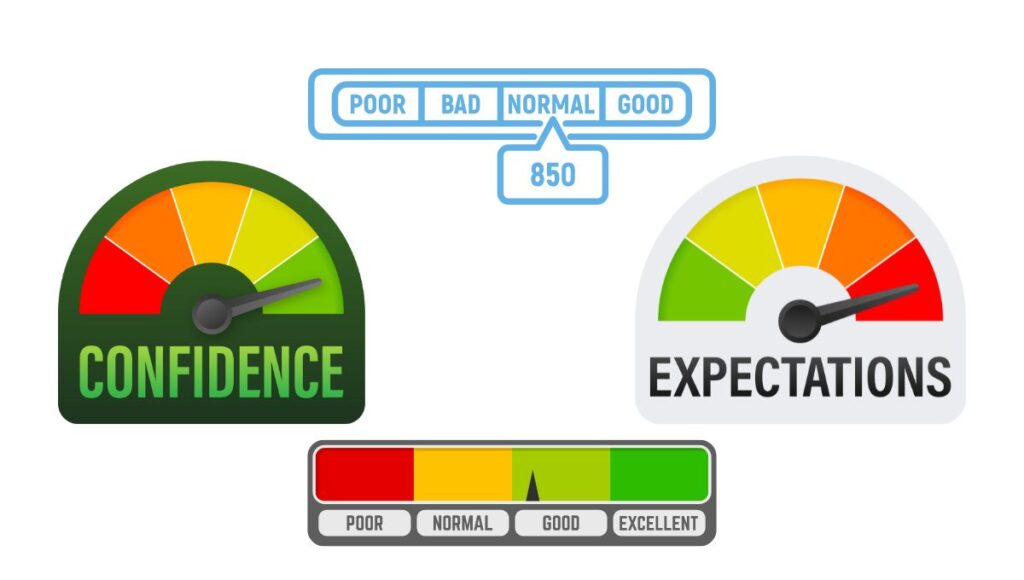
What are testing and measuring? Testing and measuring are the processes of evaluating and improving your resume based on data and feedback. Testing is the process of experimenting with different versions or elements of your resume to see which one performs better. Measuring is the process of tracking and analyzing the results or outcomes of your resume to see how well it achieves its goals. They are the ongoing steps to optimize your resume and make it more successful.
Why is it important to test and measure the effectiveness of your resumes? Because it can make a huge difference in how your resume is received by recruiters and employers. Testing and measuring the effectiveness of your resume can:
- Help you identify the strengths and weaknesses of your resumes
- Help you discover new opportunities and insights for improvement
- Help you adapt to the changing market and industry trends
- Help you achieve a higher response rate, interview rate, and offer rate
Testing and measuring the effectiveness of your resumes can help you learn from your experience and feedback. It can help you stand out from the crowd of other applicants who have static or outdated resumes. It can help you persuade recruiters and employers that you are the best candidate for the job.
How do you test and measure the effectiveness of your resume? There are many methods and tools that you can use to test and measure the effectiveness of your resume, such as:
- Use analytics tools or websites: Analytics tools or websites can help you track and analyze the performance of your resumes online. They can help you measure metrics such as views, clicks, downloads, shares, etc. They can also help you compare different versions or elements of your resume to see which one performs better. Some examples of analytics tools or websites that can help you test and measure the effectiveness of your resume are [Google Analytics], [Bitly], [Resume.com].
- Conduct A/B tests: A/B tests are experiments that compare two versions or elements of your resumes to see which one performs better. You can conduct A/B tests on various aspects of your resume, such as design, layout, format, content, keywords, etc. You can use online tools or websites that can help you conduct A/B tests on your resume, such as [Optimizely], [VWO], [AB Tasty].
- Request feedback: Requesting feedback is another way to test and measure the effectiveness of your resume. You can request feedback from recruiters or employers who have reviewed or received your resume. You can ask them questions such as:
- What did you like or dislike about my resumes?
- How did my resumes match the job description and the company’s culture?
- How did my resumes stand out from other applicants?
- What suggestions do you have to improve my resumes?
Conclusion

Congratulations! You have learned the 10 ultimate strategies to write a resume that stands out in 2023. These strategies are based on my personal story, research, and feedback from recruiters and employers. They are proven to work for any industry, role, and experience level. They are easy to follow and implement.
By following these strategies, you will be able to:
- Use a modern and professional template
- Optimize your resumes for applicant tracking systems (ATS)
- Write a powerful resume summary or objective
- Showcase your skills and achievements with bullet points
- Highlight your education and certifications
- Include relevant keywords throughout your resume
- Add some personality to your resume with hobbies and interests
- Include a cover letter and a portfolio with your resume
- Proofread and edit your resumes before sending it
- Test and measure the effectiveness of your resumes
These strategies will help you create a resume that gets you noticed by recruiters and employers in 2023. They will help you showcase your value proposition and unique selling point. They will help you highlight your most relevant and impressive skills and achievements. They will help you express your motivation and interest in the job. They will help you persuade recruiters and employers that you are the best candidate for the job.
Now, it’s time to take action. It’s time to apply these strategies to your own resume and see the results for yourself. It’s time to write a resume that stands out in 2023. It’s time to achieve your career goals and dreams.
Are you ready to write a resume that stands out in 2023? If yes, then click here to get started. If no, then let me know what’s holding you back in the comments below. I’m here to help you.
FAQs
How long should my resume be in 2023?
There is no definitive answer to this question, as different jobs and industries may have different expectations and preferences for resume length. However, as a general rule of thumb, you should aim for a one-page resume if you have less than 10 years of experience, and a two-page resume if you have more than 10 years of experience. You should also consider the relevance and impact of your information, and avoid including unnecessary or redundant details that may dilute your message.
How do I format my resume for online submission in 2023?
There are many factors that can affect how your resume is formatted for online submission, such as the file format, the file size, the file name, the email subject line, the email message, etc. You should follow the instructions and guidelines provided by the employer or the platform that you are using to submit your resume online. You should also use standard file formats, such as PDF or DOCX, that are compatible with most systems and devices. You should also name your file appropriately, such as FirstName_LastName_Resume.pdf or FirstName_LastName_Resume.docx.
How do I make my resume stand out from the competition in 2023?
There are many ways that you can make your resume stand out from the competition in 2023, such as using a modern and professional resume template, optimizing your resume for applicant tracking systems (ATS), writing a powerful resume summary or objective, showcasing your skills and achievements with bullet points, highlighting your education and certifications, including relevant keywords throughout your resume, adding some personality to your resume with hobbies and interests, including a cover letter and a portfolio with your resume, proofreading and editing your resume before sending it, testing and measuring the effectiveness of your resume, etc.
What are some common mistakes to avoid when writing a resume in 2023?
There are many common mistakes that you should avoid when writing a resume in 2023, such as using an outdated or unprofessional template, not optimizing your resume for applicant tracking systems (ATS), writing a generic or boring summary or objective, listing your skills or achievements without quantifying or qualifying them, not highlighting your education or certifications properly, not using relevant keywords throughout your resume, not adding some personality to your resume with hobbies or interests, not including a cover letter or a portfolio with your resume, not proofreading or editing your resume before sending it, not testing or measuring the effectiveness of your resume, etc.

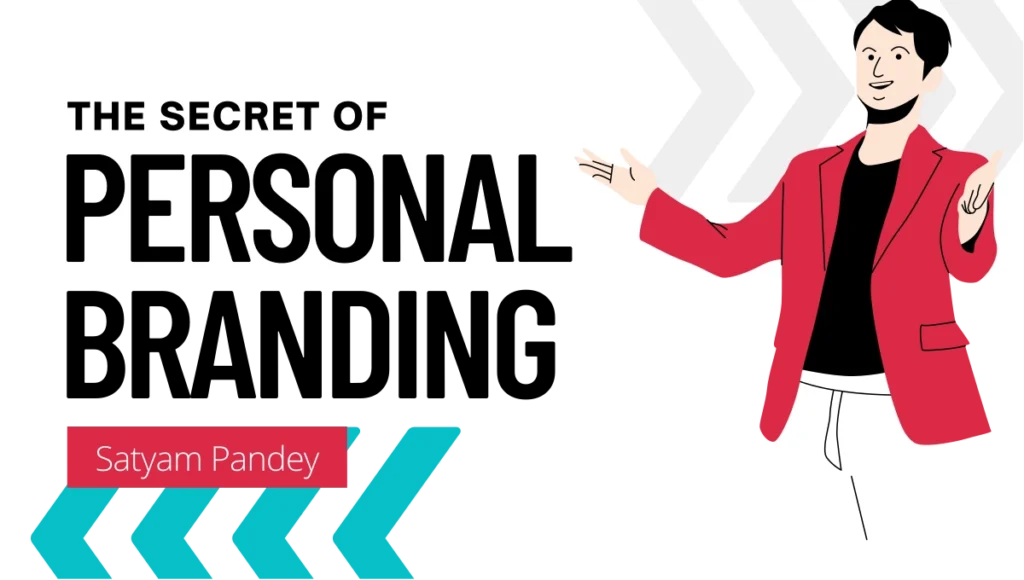


Thank you for sharing such great tips🤩🤩 Barely knew 2-3 of them😅. Helped a lot!! 🙌🙌
Always at your service.
Thanks Satyam it helps me a lot to make a resume at Fresher level for beginners.
My pleasure.